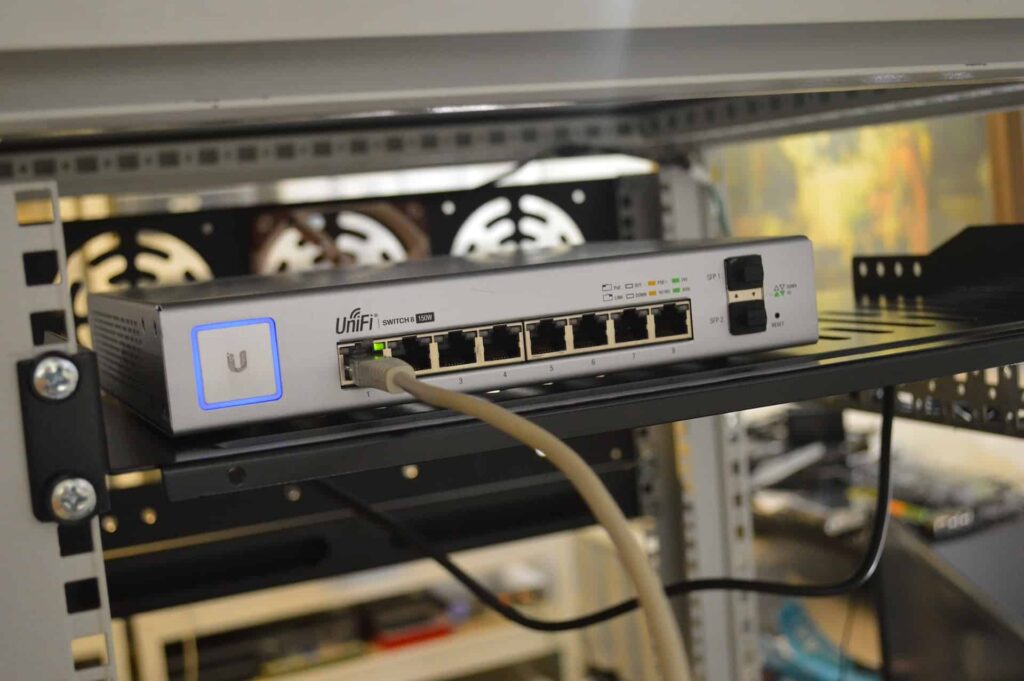There’s much talk about Power over Ethernet (PoE) technology in the business world. PoE makes buildings smarter by providing network and power connections to devices like security cameras, LED lighting, and digital signage. However, there are quite a few myths floating around about PoE. This blog post will dispel five of the most common myths about PoE technology.
1. Unreliability
One of the main myths and arguments against using PoE to enable a building is that it is an unreliable technology. Power-over-Ethernet is, in fact, a very dependable technology for several reasons. Because PoE technology depends on Ethernet, it is merely a fresh spin on a tried-and-true technology. Since managing Ethernet is a native IT function, PoE may be installed and fixed by any neighborhood IT staff. Wired technology called PoE has improved security features and little RF interference. Although Power-over-Ethernet does necessitate a direct connected connection, it is not any less flexible than equivalent wireless solutions. Companies can create creative use cases for PoE, especially with an open API.
2. PoE Doesn’t Comply with the Rules
Energy efficiency, emergency lighting, and fire safety rules, including ASHRAE 90.1, Title 24, IEEE standards, NFPA NEC, and UL 924, are all met with power over Ethernet technology. PoE power goes above and beyond conventional norms to aid building owners and developers achieve their environmental objectives. Employing a PoE system can enable businesses to benefit from sustainability certifications like LEED and WELL, which can result in project cost savings and a solid reputation in the building industry.
Related Link: Cat 5 vs. Cat 6: What You Need to Know
3. PoE Cannot Be Used to Power a Whole Building
PoE can be used to power an entire structure. In actuality, smart buildings are being revolutionized by Power-over-Ethernet. VoIP phones and IP security cameras were just the beginning of PoE, but the technology today supports a vast array of additional devices. PoE can be used for a variety of tasks, including access control, surveillance cameras, asset tracking, human-centric lighting, occupancy sensors, and more. Most LED lights from manufacturers will function perfectly on an open platform. The fact that all of these systems may directly connect with one another using the same protocol is PoE’s most valuable feature. A PoE platform can support a variety of devices in addition to offering application partners, increasing the versatility of your PoE ecosystem. Relying on these reliable partners can increase the integration options for PoE and result in a space that is even smarter and more dependable.
4. Only Lights Are Controlled via PoE Technology
A PoE-powered IoT platform can include hardware, software, and analytics solutions in addition to smart lighting technology.
Technology and Analytics
The user interface, which is available from any smart device, makes it simple to administer a whole IoT ecosystem once devices have been found. The sheer volume of incoming data can be daunting when all PoE devices are powered (and collecting data) over Ethernet. However, thanks to software gateways, previously isolated systems can now connect with one another and improve the efficiency of buildings.
Hardware
By obtaining power and data from the network switch and transmitting them to linked devices, a node serves as an IoT hub. The network automatically detects connected devices to enable the plug-and-play capability.
A Realistic IoT option for your construction project is PoE.
Although Power-over-Ethernet (PoE) has been the subject of numerous false claims, it is actually a trustworthy IoT solution that complies with laws and has many uses beyond lights. Businesses can innovate thanks to a PoE solution that offers more useful data. PoE is not only feasible for your next building project but also a wise solution for future-proofing your client’s building thanks to hardware, software, and analytics working together.
Having trouble finding the right technology solutions for your business? Contact us today for help!

What is Power over Ethernet (PoE)?
Power over Ethernet (PoE) is a technology that allows you to transmit both data and power through a single Ethernet cable. This means that you can now power devices such as VoIP phones, security cameras, and wireless access points without having to run a separate power cable to each one. Not only does this make installation simpler and more cost-effective, but it also reduces the risk of tripping hazards in the workplace.
Related Link: What Are Cat 6 Ethernet Cables?
Does My Business Need PoE?
If you are using any IP-based devices in your business, then the answer is most likely yes. Most new VoIP phones and security cameras on the market today support PoE, and many newer routers also come with PoE capabilities built-in. If you’re not sure whether your devices support PoE or not, simply check the manufacturer’s website or documentation.
One of the main benefits of using PoE is that it allows you to install devices in locations where there is no main power available. This could be outside in a car park or warehouse, or inside in a location where running cables would be difficult or disruptive. As long as there is an Ethernet connection available, you can use PoE to power your devices.
Interested in learning more about workplace technology? Learn more at our blog!
Debunking Power Over Ethernet Myths
Power over Ethernet is a fantastic technology that can provide many benefits for businesses of all sizes. While PoE is definitely a powerful technology, it’s important to dispel some of the myths that can surround it. By understanding what PoE can and cannot do, you can make sure that you are using it in the most effective way possible for your smart building.
Related Link: What is an Ethernet Cable? Find the Best for Your Needs
Last Updated on July 6, 2023 by Josh Mahan




